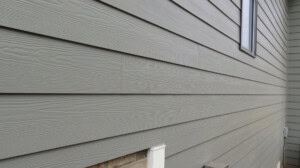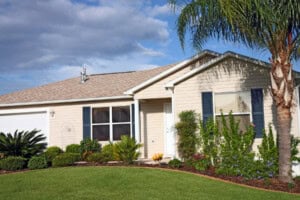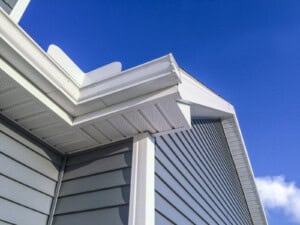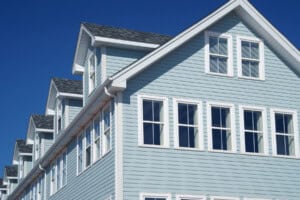Siding is the first barrier between a home and harsh weather — which is why it’s important to select the right material. When working with homeowners, consider factors like the weather extremes in the area and the durability and versatility of materials required. Here’s our breakdown of siding material trends by region.

Northeast
In the Northeast, where temperatures vary widely, the importance of insulated siding cannot be overstated. That’s why composite siding is an excellent option, as it offers both insulation and durability. Another option to consider is fiber cement. Although fiber cement siding may provide less insulation, its lasting durability makes it a compelling option for Northeastern homes.
It’s impossible to ignore the traditional architectural styles of the Northeast and their influence on modern home design. Many are drawn to the Northeast for its timeless charm, which is why decorative stone siding continues to be a popular choice in the region as it offers classic aesthetics and low maintenance.
While traditional homes in the region often sport a crisp white exterior, more contemporary styles are emerging. These homes embrace earthy greens and sleek black accents, adding a bit of a modern twist to the classic Northeastern architectural landscape.
Southeast
In the Southeast, where excessive moisture is a concern, it’s important to choose a siding material that is resistant to mold growth. Metal siding options like aluminum or steel are ideal for keeping out water, which can make other materials, like wood, susceptible to rot and attractive to insects. Across the region, brick exteriors are prevalent and cherished for their classic aesthetic, enduring elegance and sturdy construction. On the other hand, fiber cement is becoming increasingly popular due to its affordability and clean, modern aesthetic. Another alternative is engineered wood, which is an especially appealing option for those looking for moisture resistance while keeping a more natural look.

There’s a notable rise in emphasis on detail in the region, with homeowners choosing board and batten designs that extend across their entire home rather than just as accents. An increasing number of homeowners are also choosing to incorporate a variety of cladding materials into their homes’ exteriors, blending elements such as brick, stucco and fiber cement to give their home a unique finish. Plus, there is a growing preference for darker trims and black gutters, windows and railings to achieve a beautiful contrast.
In terms of siding color, many residents in the region opt for neutral white and gray shades. However, Southeasterners seeking a classic pop of color are gravitating toward deep blue hues.
Midwest
In the Midwest, extreme winter temperatures and the frequent threat of tornadoes make durability a must when choosing siding. Vinyl siding stands out as a popular choice, thanks to its versatility, insulated options and affordability which allow it to achieve custom looks that are durable and within budget. While vinyl siding is common, many homeowners also choose other durable options like fiber cement and decorative stone siding — which offer both longevity and safety.

To infuse some Midwest rustic charm, shakes and shingles or board and batten looks are often incorporated into the region’s homes. While classic white and gray tones are common for exterior colors, there is a notable rise in earthy tones like sage and forest green.
Southwest
In the Southwest, the dry and hot climate poses wildfire risks, and energy efficiency is key. Homes in the region should be built to resist wildfire damage and offer insulation to lower energy costs. Fire-resistant vinyl siding emerges as a popular choice in the Southwest as it offers safety and longevity. Vinyl is also affordable and highly customizable, giving homeowners more options for personalization.
While stucco and brick siding remain staples in this part of the country, fiber cement siding is gaining popularity thanks to its durability and customization options. Earthy tones and natural textures are becoming commonplace here, though jewel tones like emerald green or bright blue can pop against the desert backdrop. For those looking to go extra bold, opting for a black finish can create a striking look.
Pacific Northwest
Surrounded by towering pines and rocky mountains, many homeowners in the Pacific Northwest prefer an organic look to blend in with the aesthetic of their environment — making decorative stone siding a popular siding material choice. Homeowners in this region need something that won’t break down in the rainy and humid weather. Because of this, composite and engineered wood siding are popular in the Pacific Northwest. For color options, many homeowners find inspiration in nature, channeling lush forests with earthy green tones or pulling in some dark shades of blue to complement the coastal waves.
Coastal Areas

Coastal homes inhabit a beautiful yet harsh environment, so they must be ready to withstand saltwater sprays, hurricane winds and abrasive sand. Composite or engineered wood siding are great for this area, offering a waterproof exterior with a classic coastal wood grain look. Composite wood also offers more durability as it holds up well against the aggressive elements of the coast. Board and batten are commonly found on coastal homes and add extra dimension and detail to home designs. Brass hardware and shiplap accents enhance the nautical nature of builds.
ABC Supply has a variety of options for siding that are suited for diverse climates and homeowner preferences. Visit your local ABC Supply location to check out the wide variety of materials available. You can also learn about other exterior trends for your region like windows, doors and roofing.